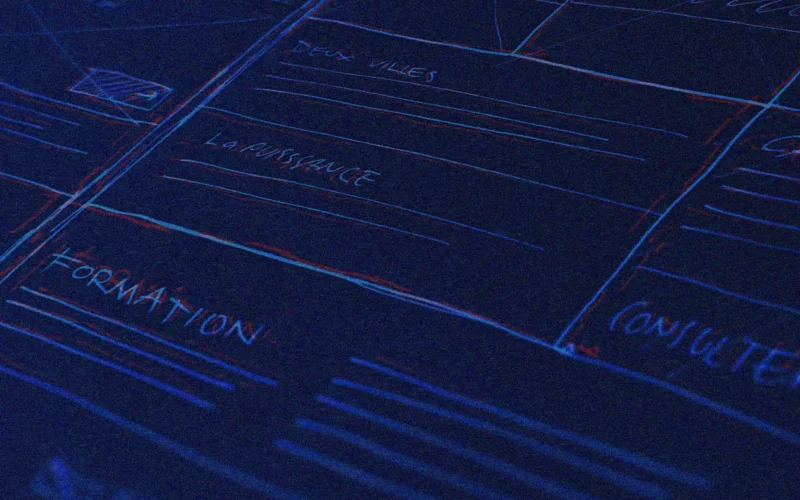What is UX design?
Definition and key concepts
User experience design (UX) refers to the process that aims to improve user satisfaction by enhancing usability, accessibility and enjoyment when interacting with a product or service. User experience is holistic and encompasses all of a user’s interactions with a website, application or device. Good UX design not only makes a site aesthetically pleasing, but also facilitates interaction, helps achieve user goals faster and more efficiently, and improves conversion rates. Poor UX design can result in frustration, website abandonment, and ultimately a low conversion rate.
Difference between UX and UI
It is important to distinguish between UX (user experience) and UI (user interface). UI refers to the visual and aesthetic part of the website or application, while UX is more related to the user’s overall perception when interacting with that visual environment. Although both concepts are interconnected, they focus on different aspects of design. A good user interface can attract, but an effective user experience retains and converts.
The relationship between UX and conversion rate
UX as a driver of user interaction and satisfaction
UX design plays a key role in conversion rate, as it directly affects how users perceive and use a website or app. If the design of the experience is intuitive, users will find what they are looking for quickly, which increases the likelihood of completing key actions such as making a purchase, signing up for a newsletter or downloading content. In short, the ease of use offered by a good UX is a determining factor in conversion rate.
Practical examples of how UX improves conversion
Imagine an e-commerce site that has a complicated design, where the checkout process is long and confusing. In this case, users will probably abandon the shopping cart before completing the transaction. On the contrary, if the navigation is clear, the loading time is fast and the checkout process is simple, the conversion rate increases considerably. According to a Forrester Research study, an excellent UX can increase the conversion rate by 400%. This demonstrates the importance of user experience in retaining and closing sales.
UX factors directly influencing conversion rate
Page loading speed
Load speed is one of the most critical factors affecting user experience. A delay of just one second in loading a page can reduce conversion by 7%, according to a Google study. Users expect websites to load quickly; otherwise, they abandon and look for alternatives. Load time optimization should be a priority in any conversion-oriented UX strategy.
Intuitive navigation
Clear and simple navigation allows users to find what they need effortlessly. If website visitors have to click several times to get to a specific page or the site structure is confusing, they are likely to get frustrated and leave the site. An intuitive, well-categorized and accessible navigation menu improves both the experience and the conversion rate.
Adaptive or “responsive” design
Responsive design is critical in a world where mobile traffic outpaces desktop traffic. A website that looks and functions properly on all devices is more likely to convert users. According to a study by Statista, more than 50% of e-commerce transactions are made from mobile devices, so optimizing UX for mobile is essential to improve conversion rates.
Main components of conversion-oriented UX design
Attractive visual design
A pleasing visual design is crucial to capture users’ attention, but it must also be aligned with functionality. Colors, fonts and graphic elements play an important role in the overall experience. A visual design that reinforces the brand and guides the user to specific actions, such as clicking a purchase button or signing up for an account, can greatly improve conversion rates.
Accessibility and its impact on conversion
Accessibility in UX design means that products or services can be used by people with various abilities. This includes not only people with disabilities, but also users who face different technological or situational limitations. An accessible website not only improves user satisfaction, but also broadens the potential audience, which directly impacts the conversion rate.
Microinteractions and their role in the user experience
Microinteractions are small animations or interface changes that provide feedback to users, such as when you change the state of a button or submit a form. These small interactions can enhance the user experience by making them feel more engaged with the site or application. Well-designed microinteractions can also guide users through the conversion funnel more effectively.

Impact of content and structure on UX design
The importance of visual hierarchy
Visual hierarchy refers to the arrangement of page elements so that users know what is most important and where to focus their attention. A design with a well-defined visual hierarchy naturally guides users to perform the actions you want, such as clicking a button or filling out a form. This structure improves conversion by making navigation and decision making clearer.
How well-designed calls to action (CTAs) influence conversions
Calls to action (CTAs) are critical to conversion rates. An effective CTA must be visually prominent, clear and persuasive. The location of the CTA, its color, text and size play a key role in the user’s decision to click or not. A good CTA not only improves conversion, but also contributes to a better user experience, guiding them through the decision-making process in an intuitive way.
The importance of A/B testing in UX for improving conversion
How to measure UX impact with A/B testing
A/B testing allows you to compare two versions of a website or application to see which one generates better results in terms of conversion. In the realm of UX design, A/B testing is an essential tool for optimizing elements such as layout, navigation and CTAs. Measuring how users respond to different versions can provide valuable insights to make continuous improvements that drive conversion.
Examples of successful conversion optimization tests
A classic example of a successful A/B test is the optimization of registration forms. By reducing the number of fields and simplifying the process, many companies have experienced significant improvements in their conversion rate. Another example is testing different versions of a landing page, where small adjustments to colors, images or CTA text can make a big difference in performance.
Tools for improving UX design and increasing conversion
User behavior analysis tools
To improve UX design, it is essential to use tools that allow you to understand user behavior. Some of the most popular include Hotjar and Google Analytics, which give you key insights into how users navigate your website, which sections generate the most interaction and at what points they leave the site.
Professional UX/UI design services
If you want to optimize your conversion rate and improve the user experience of your website, having a professional UX/UI design agency can be a great advantage. Specialized services like those offered by Several.Pro in Barcelona provide a comprehensive approach to improve the usability and visual interface of your site, ensuring a satisfactory experience for users.
UX design and prototyping tools
In addition to professional services, you can use tools such as Figma and Adobe XD to create interactive prototypes and preview the UX design before officially launching it. These tools allow you to collaborate with other team members in real time and make quick adjustments on the fly.










